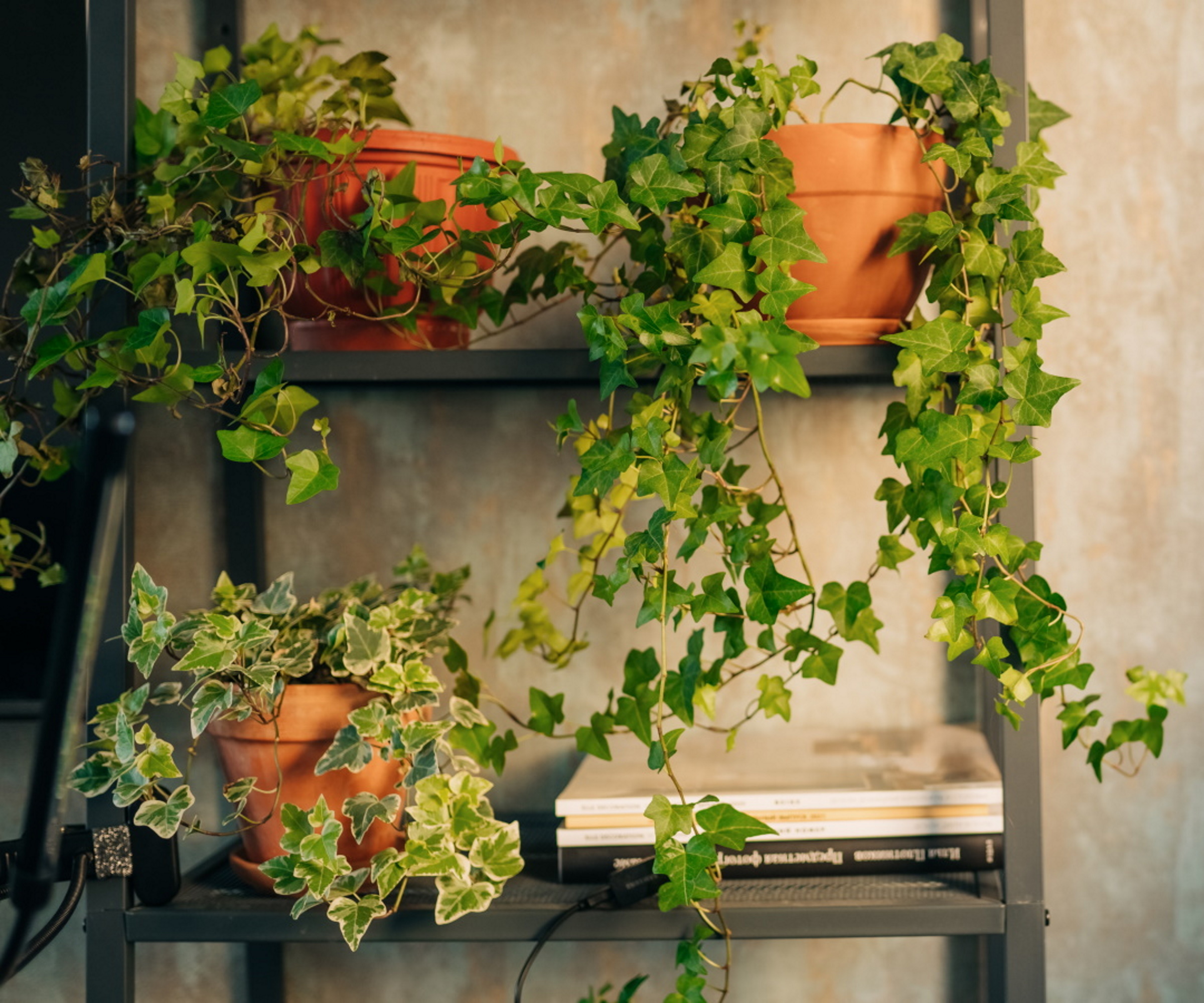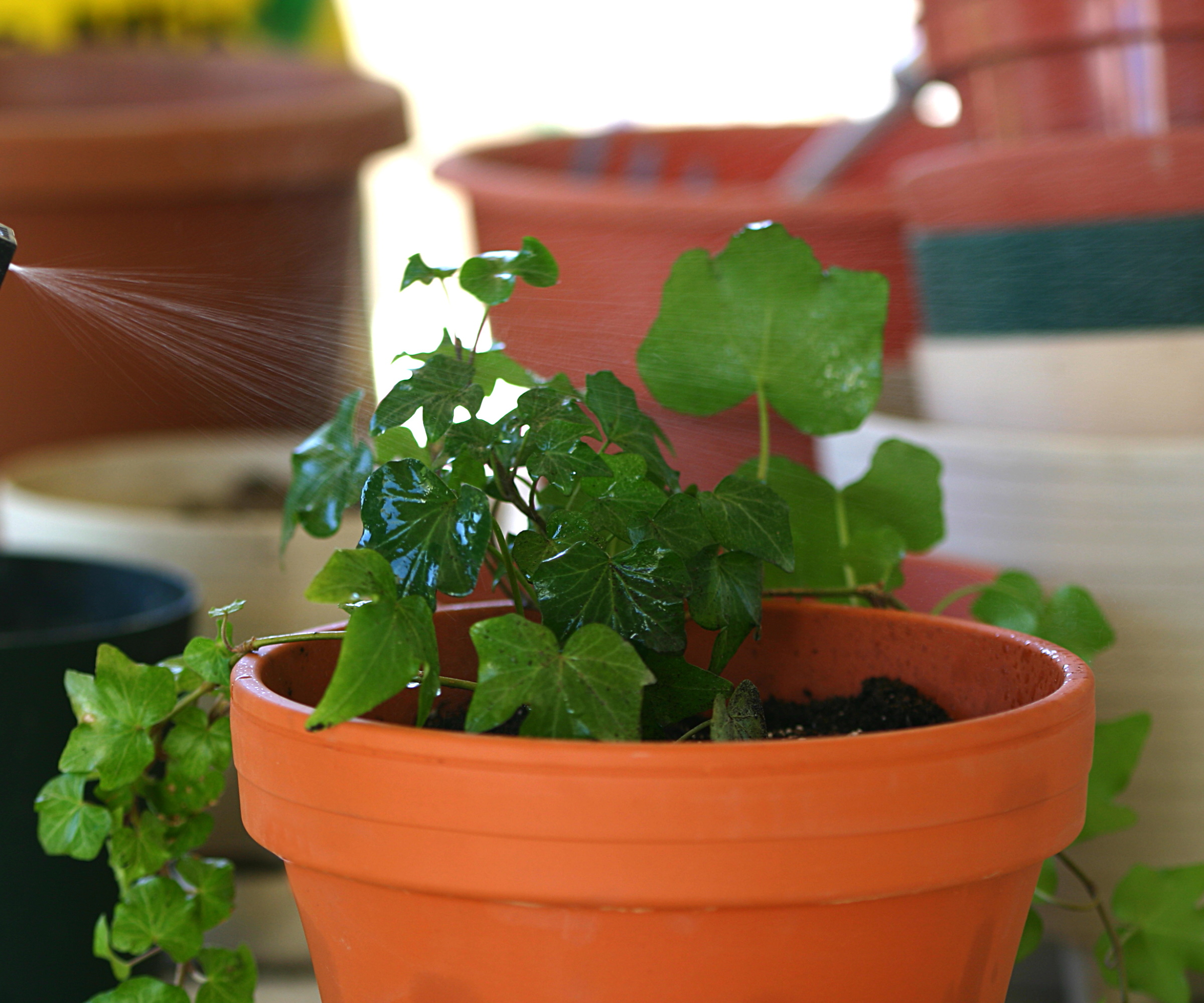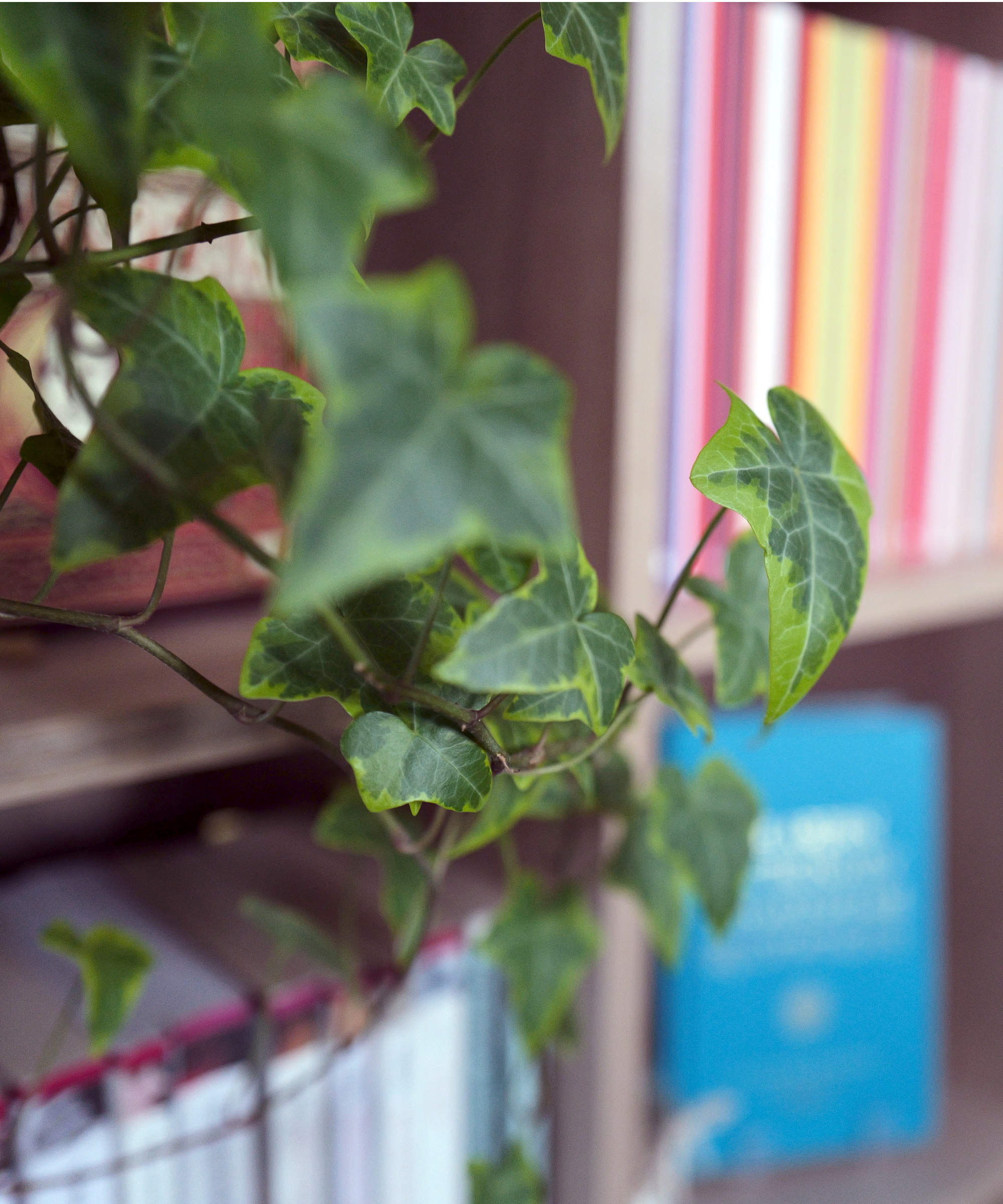How to care for ivy – 5 expert tips for growing this classic trailer indoors
You can easily grow common ivy as a houseplant, and with optimal care it will keep getting longer


Common ivy, or Hedera helix, was one of the first plants I bought when I started my indoor plant collection. It's incredibly low-maintenance, fast-growing and instantly uplifts your interiors with beautiful trailing foliage.
I haven't had to do much to keep my ivy going over the years and it's still continues to thrive in a happy spot on my bookshelf. Its easy-to-care-for nature is what makes it one of the most popular houseplants among indoor gardeners.
Ivy is native to the UK where it can often be spotted climbing quaint homes in the countryside. It's an evergreen climber with bright green, veined foliage that turn beautiful shades of red in fall. In the US, English ivy can be grown in hardiness zones 4-13. As a vigorous climber, annual maintenance and pruning of ivy is important.
As a houseplant, ivy doesn't mind dropping room temperatures in colder seasons and will stay a vibrant green throughout the year. With the right care, its strands will keep growing and can reach many meters in length.
We've asked the experts how to give ivy optimal conditions when growing it indoors.

5 expert care tips for ivy
Growing ivy as an indoor plant is easy and a great option for beginner plant parents. With little effort, you can keep your ivy happy and healthy. Here are five expert tips for caring for ivy indoors.
1. Place it in bright light

When it comes to decorating your home with plants, the first thing you need to do is choose the best spot for it so that it receives the right level of natural light. Luckily, ivies are quite adaptable as houseplants.
Design expertise in your inbox – from inspiring decorating ideas and beautiful celebrity homes to practical gardening advice and shopping round-ups.
'Ivy plants prefer medium to bright, indirect light and can tolerate low light conditions,' says Autumn Hilliard-Knapp, houseplant expert from Perfect Plants. 'However, they should be protected from direct sunlight, as it can harm the leaves,' she adds.
There are lots of different types of ivy that you can grow as houseplants, including beautiful variegated ivies which require brighter light to maintain their different colors.
If in doubt, place your ivy somewhere bright but out of direct sunlight. 'Plants grown in good light will always maintain a more bushy and pleasing shape than plants that are stressed and reaching for light,' says Jeannie Psomas, plant expert and owner of The Plant Lady: San Francisco

Autumn is a horticulture specialist and marketing professional at Perfect Plants Nursery. With four years of experience in the horticulture industry, she has developed a passion for helping people create beautiful indoor and outdoor spaces to enjoy. Her expertise in horticulture encompasses a broad range of activities, including plant care and selection, landscape design, and maintenance.

Jeannie Psomas owns The Plant Lady: San Francisco, an indoor plant shop located in San Francisco, California which caters to collectors and hobbyists alike. With a strong emphasis on plant science and education, Jeannie's philosophy is that anyone can grow gorgeous plants indoors.
2. Keep ivy elevated

Ivy is loved for its trailing and climbing qualities. To make the most of this look, many people choose to style their ivies up high.
Whether its on a plant stand or plant shelf, you can achieve an elegant cascading look by elevating your ivy.
'Many people allow them to hang down gracefully in mounted planters,' says Jeannie. There are lots of hanging planters available on the market to suit different interior aesthetics, like this hanging planter from Amazon.
Not only will elevating your ivy allow you to style it in a desirable way, it can also help provide it with more light. This is especially true if you have darker rooms that struggle to get lots of natural light.
3. Don't let it dry out

Knowing how to water houseplants can be tricky, especially when you're juggling different needs of different plants.
Ivy isn't too hard to keep happy, however, and all it takes is keeping moisture levels consistent.
'Ivy plants prefer to be kept evenly moist, but not overly wet. It's important to let the top inch or so of soil dry out before watering again,' says Autumn. 'When watering, thoroughly saturate the soil until the water drains out from the bottom of the pot,' she adds.
It's best to not let ivy sit in water as this could result in root rot. Using containers with drainage holes, like these ceramic plant pots with drainage holes from Amazon, can help ensure excess water drains away.
'In drier indoor environments, it's helpful to increase humidity levels by misting the leaves or placing a tray of water near the plant,' says Autumn.
4. Don't be scared to prune

As a fast-grower, you can expect to witness your ivy double in length right before your eyes. Don't be hesitant to take a pair of pruning shears to it, like these artisan pruning shears from Greendigs, as stems will quickly grow back again.
'Prune to your heart's content. This is healthy for the plant. Just don't prune more than a third of the plant at one time,' says Jeannie.
Pruning not only keeps your ivy at a desired length, it also promotes further growth and will keep it healthy. Just use clean tools to trim above a leaf node, where a leaf attaches to the stem.
Don't be too quick to throw those trimmings away because its easy to propagate ivy from cuttings and multiply your plants.
'If you want your ivy to climb or trail in a specific direction, you can use also plant ties, hooks, or a trellis to guide the vines,' says Autumn. 'Secure them loosely to avoid damaging the stems, ensuring they have room to grow,' she adds.
5. Monitor aerial roots

You might notice small roots growing on the bottom side of your ivy stems. These are tiny aerial roots which the plants use to attach themselves to surfaces and climb.
Aerial roots can also be spotted on other indoor plants like monsteras and orchids which both use them to gain moisture.
It's important to be aware of your ivy's aerial roots because they may attach to your surfaces if left alone.
'Vines might begin to train themselves up your wall,' says Jeannie. 'If you don't desire this you should just monitor the plant and prune as necessary to prevent this,' she adds.
Regularly monitoring your ivy stems and moving them away from surfaces will discourage them from attaching where you don't want them to.
FAQs
How do you propagate ivy?
Ivy is one of the easiest houseplants to propagate. You can take cuttings of stems with around four leaves on and root them either in water or soil. Make sure to cut just above a leaf node, where a leaf attaches to the stem, using clean and sharp tools. Choosing stems with small aerial roots can also increase chances of roots establishing. You should root a few cuttings at a time to grow a plant with a fuller look.
Why are my ivy leaves turning brown?
There are a number of reasons why the leaves on your ivy houseplant may be turning brown. It's a sign that it isn't receiving optimal care, including incorrect watering and light. Ensure your ivy isn't oversaturated or sitting in water because this can lead to root rot and turn leaves brown. Likewise, the foliage of ivy will not stay bright if it has insufficient light. Prune away any brown and unhealthy foliage and adjust the growing conditions of your ivy to improve its health and appearance.
Ivy is a wonderful houseplant for any beginner. It's easy to look after and with just some essential care will thrive happily in your home. If you want to discover more options for trailing indoor plants, pothos, string of hearts and string of pearls are lovely additions to consider.

Tenielle is a Gardens Content Editor at Homes & Gardens. She holds a qualification in MA Magazine Journalism and has over six years of journalistic experience. Before coming to Homes & Gardens, Tenielle was in the editorial department at the Royal Horticultural Society and worked on The Garden magazine. As our in-house houseplant expert, Tenielle writes on a range of solutions to houseplant problems, as well as other 'how to' guides, inspiring garden projects, and the latest gardening news. When she isn't writing, Tenielle can be found propagating her ever-growing collection of indoor plants, helping others overcome common houseplant pests and diseases, volunteering at a local gardening club, and attending gardening workshops, like a composting masterclass.